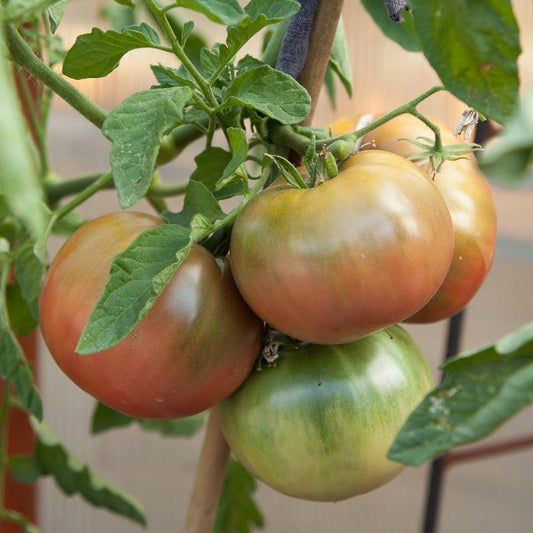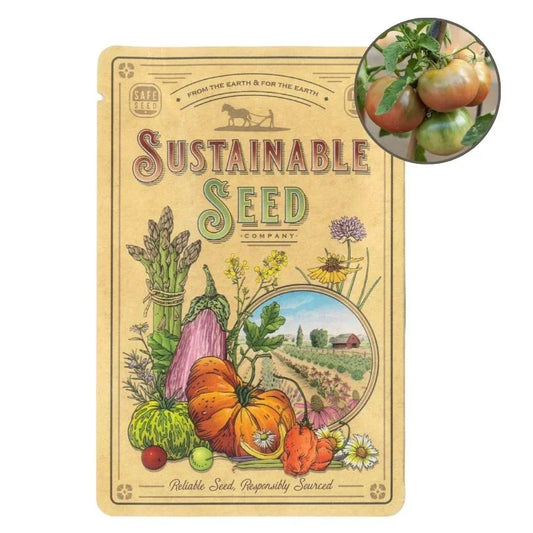Gardeners already have plenty to do during the growing season, from pruning roses to maintaining grapevines. However, pruning tomato vines is a simple task that doesn’t require much time. Grooming your tomato plants once a week can significantly improve their health, yield, and ease of maintenance. Plus, touching those hairy stems and fragrant leaves is a satisfying experience in itself!
Benefits of Pruning Tomato Vines
Pruning tomato vines offers several rewards that make the effort worthwhile:
1. Larger, Earlier Tomatoes
Pruning helps direct the plant’s energy toward fruit production, resulting in larger tomatoes that ripen earlier. This is especially beneficial in short growing seasons or cooler-than-usual summers.
2. Slimmer Plants for Vertical Growing
Pruning creates a more compact plant structure, making it easier to grow tomatoes vertically. This is ideal for gardeners with limited space or those using vertical supports.
3. Healthier Plants
By pruning and growing vertically, you increase air circulation around the leaves, reducing the risk of diseases like blight. It also keeps leaves and fruit off the ground, minimizing exposure to pests and dirt splashing during rain.
Two Schools of Thought on Pruning Tomatoes
There are two primary methods of pruning tomato suckers, each with its own benefits:
1. Pinching Off at the Base
In this traditional method, you pinch off the sucker at its base where the vertical stem meets the branch (known as the axil or crotch of the plant). This method keeps the plant streamlined and focused on producing fruit.
2. Missouri Pruning
The University of California, Davis recommends "Missouri pruning," where you allow two leaves to remain on the sucker and snip off the rest.
-
Advantages of Missouri Pruning:
- The remaining leaves contribute to photosynthesis, boosting the plant’s energy production.
- They provide shade for the fruit, helping to prevent sunscald in sunny climates.
Pruning Is for Indeterminate Tomatoes
When it comes to pruning, not all tomato plants are created equal.
- Indeterminate Tomatoes (Vining): These varieties, such as ‘Beefsteak’ or ‘Cherokee Purple,’ continue growing throughout the season and benefit from regular pruning to manage their size and health.
- Determinate Tomatoes (Bush): These varieties, like ‘Roma,’ stop growing at a predetermined height and do not require pruning. In fact, pruning bush tomatoes can reduce their yield.
As Tricia explains in our video on tomato pruning and problem control, only prune vining tomatoes for the best results.
How to Prune Tomato Vines
Pruning tomato vines is simple and straightforward. Once a week, grab your snippers and inspect your plants closely:
- Identify Suckers: Look for the small shoots growing in the axils (the space between the main stem and branches).
- Pinch or Snip: Use your fingers or snippers to remove the suckers, depending on the method you prefer.
- Maintain Airflow: Remove excessive leaves that block airflow, especially those near the base of the plant.
This routine pruning will help your plants stay healthy and productive throughout the growing season.
Supporting Pruned Tomato Plants
String Support Method
If you have the space and setup, growing tomatoes on a string is an efficient way to support them:
- Install Horizontal Wires: Run a strong horizontal wire across your tomato rows.
- Tie Strings: Attach a string or twine to the wire above each plant. Secure the other end to the ground with a staple or loosely tie it to the plant’s base.
- Train the Plants: Wrap the main stem around the string or tie it loosely as it grows.
For this method, prune all suckers and allow only one main stem (leader) to grow.
Advantages of String Support
- Saves Space: Allows closer planting of tomatoes.
- Better Airflow: Reduces disease risk by improving ventilation around the plants.
- Easier Harvesting: Makes fruit more accessible for picking.
Additional Tips for Growing Tomatoes
- Experiment with Support Systems: Try various methods such as cages, stakes, or trellises to find what works best for your garden.
- Monitor Plant Health: Keep an eye out for signs of disease or pests and address issues promptly.
- Use Mulch: Mulch around the base of your plants to conserve moisture and prevent soil-borne diseases.
- Fertilize Wisely: Provide balanced fertilizers to support healthy growth and fruit production.
Why Prune Tomatoes?
Pruning tomato vines might seem like extra work, but the benefits far outweigh the effort. By removing unnecessary growth, you help your plants focus on producing healthy, delicious fruit. Whether you’re growing tomatoes for salads, sauces, or snacking, proper pruning ensures a bountiful harvest.
For More Information
For additional guidance on growing tomatoes, check out our Growing Guide in the Resource Center. We also offer a wide variety of tomato seeds for sale, so you can grow the perfect tomatoes for your garden.






5 comments
BB, plants grown in pots need to be fertilized frequently since the fertilizer is lost from watering. Sounds like they do not have enough phosphorus. You can feed them an all purpose fertilizer according to the label about every 2-4 weeks.
I have a tomatoe patio plant in a pot that is 15 inch round at top an 10 inch at base, an 15 inch hi an my tomatoes are small in size. I use bought garden soil for tomatoes, why are they growing so small, approx 5/8th of their normal size while ripening well?
Didn’t know about the Missouri method. I’ll check that out. TNX
Rich, If you have a really short growing season, starting your seeds early so your transplants are a good size will help you with growing great veggies. You can also utilize floating row covers, or build yourself some hoop houses covered with greenhouse poly. If you have the space you can also consider a greenhouse or grow in a cold frame. When there is a will there is a way. I know of farmers that grow in Maine in greenhouses (or large hoop houses). If you grow Dahlias you may want to lift them for the winter. You can dig them up, put them in pots and locate the pots to an area so the soil in the pots do not freeze.
I have learned so much from your videos and this post will really save me next year. Here in southern New Jersey, I grow some tomatoes but it ends up being the only crop I really grow. Other than some great perennial herbs and flowers, of course. I realized that this year, the first year I actually started seeds early, that they were overwatered and the pests got to them. My next battle is Pill Bugs. Can I ask you about Dahlia’s?